Introduction
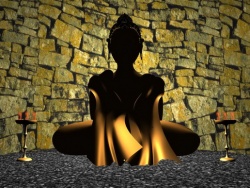 Indian materialism is not so well known, nor is it known in all its details at home or abroad as are other metaphysical doctrines which originated in India. This is mainly due to the fact that the original literature related to materialistic metaphysics has been lost beyond recovery, and that the critical references to this brand of metaphysics made by its adversaries as well as certain stray references to it to be found here and there are the main sources of our knowledge about it.
Indian materialism is not so well known, nor is it known in all its details at home or abroad as are other metaphysical doctrines which originated in India. This is mainly due to the fact that the original literature related to materialistic metaphysics has been lost beyond recovery, and that the critical references to this brand of metaphysics made by its adversaries as well as certain stray references to it to be found here and there are the main sources of our knowledge about it.
Barhaspatya
The beginning of Indian materialism is marked by the emergence of Barhaspatya, the school of philosophy founded by a person called Barhaspati whose identity remains undiscovered till this day. To begin with, Barhaspatya was purely negative and destructive, with no positive contribution of its own towards the enrichment of philosophic thought. To oppose the views of other schools of philosophy, to refute the authority of Vedas and to harp on the futility of the performance of the rituals enjoined by the Vedas were the sole occupation of the immediate followers of Barhaspati. But the purely negative attitude of Barhaspatya eventually underwent a modification in the manner of the incorporation within it, according to which effects are self-existent, being neither the products of other things as causes nor, obviously, of themselves. As a result, Indian materialism in the shape of Barhaspatya became conspicuous for its rejection of the principle of causality and the good and evil consequences of actions. In fact, this twofold rejection remained its main feature. Thus Indian materialism in the hands of the immediate followers of Barhaspati retained its original negative and destructive tendency. It was, therefore, in need of the incorporation within itself of a few positive elements in order that it could establish its claim as a metaphysical doctrine properly so called. And the fulfilment of this need came about as a result of the transition from the Barhaspatya to the Lokayata school.
Lokayata
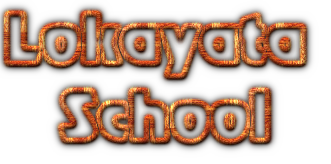 The Lokayata school, initially equipped with naturalism and, consequently, committed to the rejection of the principle of causality and of the good and evil consequences of the actions, soon became positively oriented and admitted the authority of perception. In consequence, it came to advocate the most extreme form of empiricism, holding as it did that nothing can be said to exist or be real which is not perceivable. And this ruled out the possibility of inference, because inference must have a universal proposition as its major premise, and because perception is incapable of yielding universal propositions, being unavoidably limited to the explanation of particular matters of fact. Solely dependent upon the deliverances of perception and deprived of the help of inference in its understanding of man and the universe as it was, the Lokayata had no option but to regard life and consciousness as ancillary to, or derivatives of, matter which alone is open to perception. According to it, life is the result of the collection or mixture of material atoms in a certain proportion and according to certain order. Consciousness, likewise, is inseparable from matter, being none but the function of the living body. This, as the Lokayata observes, is conclusively established by innumerable facts concerning the relation between the body and the mind. Since consciousness as ordinarily held, is the essence of what is called the soul or self, and since it is the function of the living body, the soul, as the Lokayata further held, is indistinguishable from, and indeed is identical with, the living body.
The Lokayata school, initially equipped with naturalism and, consequently, committed to the rejection of the principle of causality and of the good and evil consequences of the actions, soon became positively oriented and admitted the authority of perception. In consequence, it came to advocate the most extreme form of empiricism, holding as it did that nothing can be said to exist or be real which is not perceivable. And this ruled out the possibility of inference, because inference must have a universal proposition as its major premise, and because perception is incapable of yielding universal propositions, being unavoidably limited to the explanation of particular matters of fact. Solely dependent upon the deliverances of perception and deprived of the help of inference in its understanding of man and the universe as it was, the Lokayata had no option but to regard life and consciousness as ancillary to, or derivatives of, matter which alone is open to perception. According to it, life is the result of the collection or mixture of material atoms in a certain proportion and according to certain order. Consciousness, likewise, is inseparable from matter, being none but the function of the living body. This, as the Lokayata observes, is conclusively established by innumerable facts concerning the relation between the body and the mind. Since consciousness as ordinarily held, is the essence of what is called the soul or self, and since it is the function of the living body, the soul, as the Lokayata further held, is indistinguishable from, and indeed is identical with, the living body.
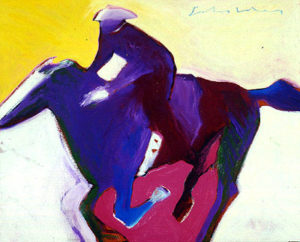 Given the above view of the situation of man regarded as a living being with a soul, the Lokayata, with a view to forming itself into a sort of philosophical system, seeks to derive its necessary corollaries as follows. Since consciousness is the essence of the soul and is at the same time the function of the living body, the perishing of the body amounts to the complete cessation of consciousness and the consequent termination of the existence of the soul. And in this the Lokayata finds all the reason for the dismissal of belief in immortality and, in particular, the doctrine of karma and transmigration which has played a dominate role in Indian philosophy through the ages. And once this doctrine comes to be rejected, the consequences which necessarily follow are: the denial of the supposed reality of other worlds, whether heaven or hell, disbelief in the theory of karmaphala, signifying the effectiveness of the consequences of the good and bad action in future life and the denial of any such thing as adrata (unseen agency; fate) regarded as the determinant of the future of man. All this led the Lokayata to the defiance of the authority of the Vedas, the supposed source of the guiding principles of human life and conduct and to the revaluation of the prevailing religion.
Given the above view of the situation of man regarded as a living being with a soul, the Lokayata, with a view to forming itself into a sort of philosophical system, seeks to derive its necessary corollaries as follows. Since consciousness is the essence of the soul and is at the same time the function of the living body, the perishing of the body amounts to the complete cessation of consciousness and the consequent termination of the existence of the soul. And in this the Lokayata finds all the reason for the dismissal of belief in immortality and, in particular, the doctrine of karma and transmigration which has played a dominate role in Indian philosophy through the ages. And once this doctrine comes to be rejected, the consequences which necessarily follow are: the denial of the supposed reality of other worlds, whether heaven or hell, disbelief in the theory of karmaphala, signifying the effectiveness of the consequences of the good and bad action in future life and the denial of any such thing as adrata (unseen agency; fate) regarded as the determinant of the future of man. All this led the Lokayata to the defiance of the authority of the Vedas, the supposed source of the guiding principles of human life and conduct and to the revaluation of the prevailing religion.
In bitter criticism of Vedas, the Lokayata observes that statements contained in them suffer from the faults of repetition, ambiguity, contradictoriness, absurdity and even meaninglessness. Moreover, in some cases a line of action prescribed by one Vedic text is condemned by another, and is sometimes happens that the sacrifices enjoined by the Vedas as productive of a certain result turn out to be fruitless. And what is more, some of the sacrifices enjoined by the Vedas, for example, the horse sacrifice recommended for the performance of the queen, involve certain obscene rituals. In view of all this, the Lokayata holds that the authors of three Vedas cannot be regarded as anything better than hypocrites, knaves, and demons.
 Traditional religion, like the Vedas, receives the most vituperative criticism at the hands of Lokayata. It is said to be as harmful as an intoxicant such as opium. Prayer is regarded as the resort of those who are mentally weak and are lacking in the will to undertake hard work. And what is worship but the expression of the egoistic idea of one’s enjoyment of heavenly happiness or else one’s safety from the tortures of hell? …All religious rites and ceremonies and all human endeavours to placate the gods by prayer and offerings are, therefore, vain and illusive. Religion, as the Lokayata concludes, is the invention of individuals seized with the evil design of the exploitation of their fellow men in order to further their selfish end and fulfil their personal ambition.
Traditional religion, like the Vedas, receives the most vituperative criticism at the hands of Lokayata. It is said to be as harmful as an intoxicant such as opium. Prayer is regarded as the resort of those who are mentally weak and are lacking in the will to undertake hard work. And what is worship but the expression of the egoistic idea of one’s enjoyment of heavenly happiness or else one’s safety from the tortures of hell? …All religious rites and ceremonies and all human endeavours to placate the gods by prayer and offerings are, therefore, vain and illusive. Religion, as the Lokayata concludes, is the invention of individuals seized with the evil design of the exploitation of their fellow men in order to further their selfish end and fulfil their personal ambition.
The kind of thinking which went into Lokayata attack upon some of the important aspects of the prevailing state of human affairs could, however, have regulated in something better than that in which it actually resulted, namely, the philosophy of eat, drink, and be merry, which obviously, treats the fulfilment of desires as the summon bonum of human life. Nevertheless it would be a mistake to hold that this sums up the entire achievement of the Lokayata. On the contrary, it should be admitted that this school of philosophy brought about the Indian illumination similar to the Greek’s which the Sophists introduced into the outlook on life in ancient Greece. In fact, the distinguishing feature of the Lokayata lay in that it was a reformist movement with a poignant concern with the social, political, and religious aspects of Indian life of its time. It was conspicuous for its appeal for the shift of interest from the wanton waste of human energy and resources over other-worldly affairs to the urgent need for the realization of earthly welfare. In a deeper analysis, it was the harbinger of freedom, freedom from the shackles which had bound people through the ages.
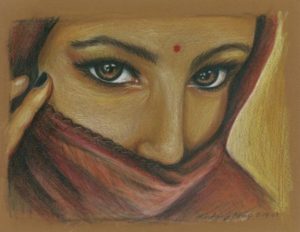 It is on account of its championing the cause of freedom that the Lokayata could prepare the ground as it actually did for the rise of Buddhism and the Buddhistic culture. This is evident from the fact that Buddha’s views against the authority of the Vedas and the Vedic sacrifices, the caste system, the worship of deities, mortifications and other ascetic practices are similar to those of the Lokayata. And the influence of the freedom movement inaugurated by the Lokayata was so comprehensive that people did not rest content with freedom only in the social and religious spheres, but became conscious of the need for political freedom. This need was eventually fulfilled when the mutually hostile states of India were brought together under the common sovereignty of the Maurya Empire at first by Chandra Gupta and then by Asoka. In any case, the Lokayata, while ignoring those academic disciplines which deal with the supersensible, attached considerable importance to those branches of knowledge which bear upon earthly welfare, including politics and economics. This is evident from the fact that their earlier view of pleasure or happiness as the highest good of life was changed and the came to regard “wealth” as a good of human life in addition to happiness. But this was not all that came out of the movement that was the Lokayata. It is most probable that it was during the period of Indian history occupied by Indian materialism that several sciences and innumerable fine arts came into existence and were widely propagated. All this serves to indicate that the Lokayata was not an evil as it is ordinarily considered to be, but was pregnant with the promise of the inauguration of an ideal state of human affairs – but a promise which has been left unfulfilled partly owing to its degeneration and partly owing to the revival and revitalization of Brahmanism to which it was sharply opposed.
It is on account of its championing the cause of freedom that the Lokayata could prepare the ground as it actually did for the rise of Buddhism and the Buddhistic culture. This is evident from the fact that Buddha’s views against the authority of the Vedas and the Vedic sacrifices, the caste system, the worship of deities, mortifications and other ascetic practices are similar to those of the Lokayata. And the influence of the freedom movement inaugurated by the Lokayata was so comprehensive that people did not rest content with freedom only in the social and religious spheres, but became conscious of the need for political freedom. This need was eventually fulfilled when the mutually hostile states of India were brought together under the common sovereignty of the Maurya Empire at first by Chandra Gupta and then by Asoka. In any case, the Lokayata, while ignoring those academic disciplines which deal with the supersensible, attached considerable importance to those branches of knowledge which bear upon earthly welfare, including politics and economics. This is evident from the fact that their earlier view of pleasure or happiness as the highest good of life was changed and the came to regard “wealth” as a good of human life in addition to happiness. But this was not all that came out of the movement that was the Lokayata. It is most probable that it was during the period of Indian history occupied by Indian materialism that several sciences and innumerable fine arts came into existence and were widely propagated. All this serves to indicate that the Lokayata was not an evil as it is ordinarily considered to be, but was pregnant with the promise of the inauguration of an ideal state of human affairs – but a promise which has been left unfulfilled partly owing to its degeneration and partly owing to the revival and revitalization of Brahmanism to which it was sharply opposed.
Carvaka
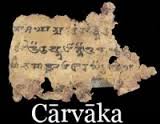 The Lokayata in its degenerate form came to be newly designated as Carvaka, although it still retained its old designation as Barhaspatya. The most outstanding feature of Carvaka consisted in its laying undue stress on the importance of pleasure as an object of human pursuit and thereby evolving the grossest form of hedonism, with the result that the freedom, the cause of which was espoused by the Lokayata, was replaced by licentiousness. It was therefore no surprise that the Buddhists and the Jainas, despite their being united with the Indian materialists by the tie of common heresy, became hostile to the latter. In consequence, the already existing opposition of the orthodox schools of Indian philosophy to Indian materialism was considerably reinforced. In this circumstance the position of Indian materialism became rather shaky and so it was compelled to yield, to anti-materialistic criticism as far as possible. Thus the materialists surrendered their old doctrine of the identity of the self with the body by first identifying the self with the sense-organs, then by identifying it with the mind. They were also compelled to withdraw step by step their view of inference as a source of knowledge. At first they conceded that inference is useful in so far as it can yield probability, instead of certain knowledge. Then it came to admit that inference is a source of (certain) knowledge about what has taken place, but not about what has not taken place or, in other words, has not been perceived such as Heaven, God, Soul, etc. Thus we enacted the tragedy of a way of thinking which was full of promise of a better future for man and society, but which was misled by its own folly on the one hand and was put to torture by reactionary trends of thought on the other.
The Lokayata in its degenerate form came to be newly designated as Carvaka, although it still retained its old designation as Barhaspatya. The most outstanding feature of Carvaka consisted in its laying undue stress on the importance of pleasure as an object of human pursuit and thereby evolving the grossest form of hedonism, with the result that the freedom, the cause of which was espoused by the Lokayata, was replaced by licentiousness. It was therefore no surprise that the Buddhists and the Jainas, despite their being united with the Indian materialists by the tie of common heresy, became hostile to the latter. In consequence, the already existing opposition of the orthodox schools of Indian philosophy to Indian materialism was considerably reinforced. In this circumstance the position of Indian materialism became rather shaky and so it was compelled to yield, to anti-materialistic criticism as far as possible. Thus the materialists surrendered their old doctrine of the identity of the self with the body by first identifying the self with the sense-organs, then by identifying it with the mind. They were also compelled to withdraw step by step their view of inference as a source of knowledge. At first they conceded that inference is useful in so far as it can yield probability, instead of certain knowledge. Then it came to admit that inference is a source of (certain) knowledge about what has taken place, but not about what has not taken place or, in other words, has not been perceived such as Heaven, God, Soul, etc. Thus we enacted the tragedy of a way of thinking which was full of promise of a better future for man and society, but which was misled by its own folly on the one hand and was put to torture by reactionary trends of thought on the other.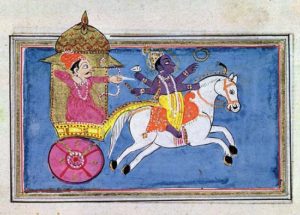
Source: The spirit of Indian philosophy, by: N.V. Banerjee